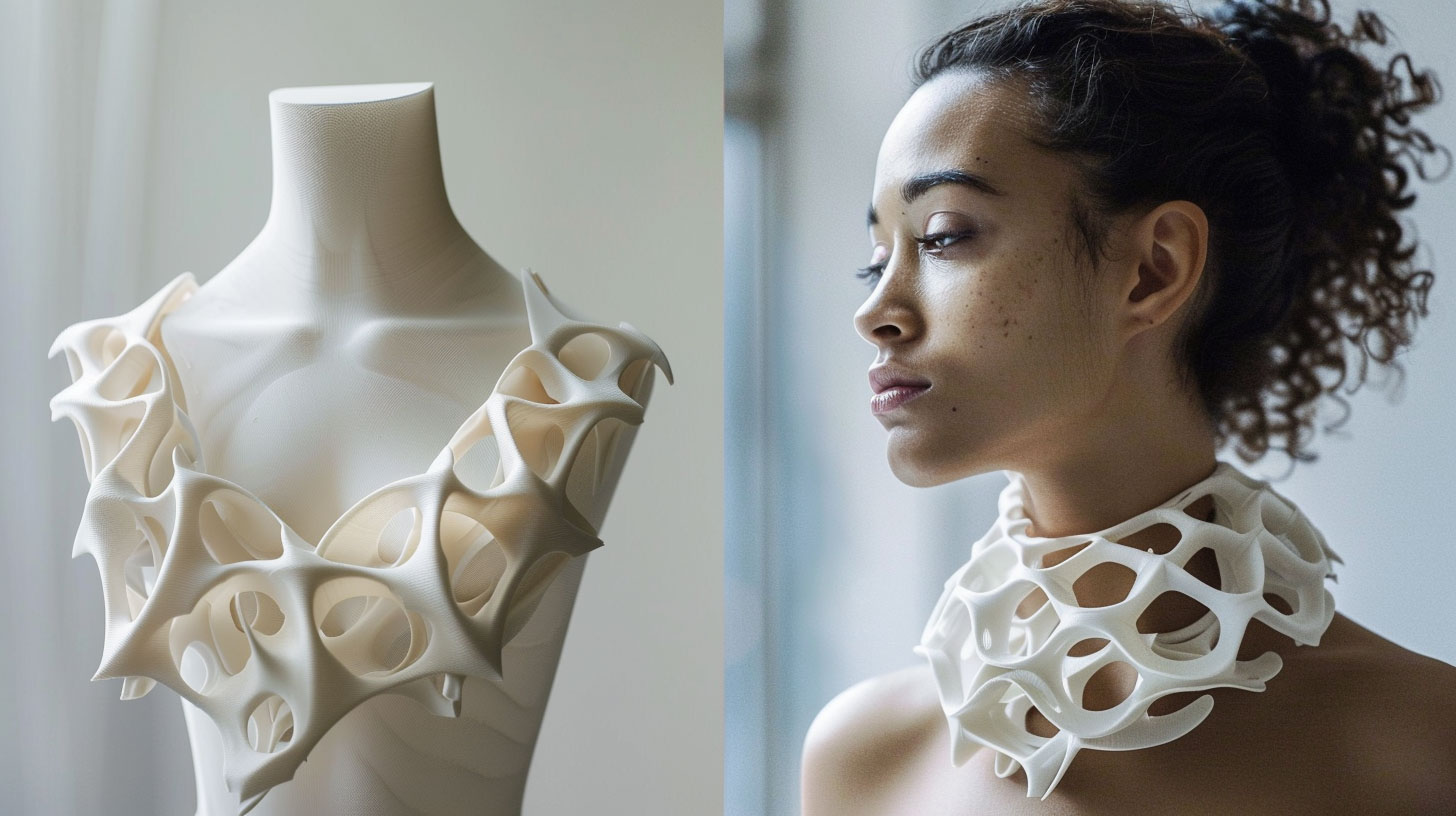Fashion and technology are famously ever-changing fields, constantly metamorphosing with societal needs and innovations. What was once considered sci-fi is slowly permeating everyday life, and one of the most fascinating intersections of these dynamic realms is the rise of 3D-printed fashion. This groundbreaking technology promises to transform how clothes are made and redefine the essence of fashion itself.
The Advent of 3D-Printed Fashion
3D printing, also known as additive manufacturing, has made significant strides since its inception. The technology enables the creation of three-dimensional objects from digital files, building layer upon layer of material until the physical form is realized. Initially confined to prototyping and specialized industrial applications, 3D printing has broken into the consumer market in various domains, including fashion.
The advent of 3D-printed fashion heralds an era where designers can bypass many of the limitations posed by traditional fabric manufacturing. Early experiments have showcased intricate patterns, structural designs, and novel materials, blending art, technology, and practicality. From extravagant catwalk pieces to sustainable, customizable everyday wear, 3D printing has become a game-changer in the fashion industry.
Benefits of 3D-Printed Fashion

Customization and Personalization
One of the primary benefits of 3D-printed fashion is the unprecedented level of customization it offers. Traditional manufacturing methods often require mass production, leading to standardized sizes and designs. 3D printing flips this concept on its head, making it feasible for designers to create bespoke garments that cater to individual measurements and preferences.
Consumers can now be co-creators, playing an active role in designing their wardrobes. Imagine a world where you can tweak a dress’s design, size, and color to match your aspirations. This empowerment extends beyond aesthetics; individuals with disabilities or specific needs can better enjoy clothing that matches their physical requirements.
Environmental Sustainability
The fashion industry has long been criticized for its environmental impact, from unsustainable manufacturing processes to the proliferation of fast fashion. 3D-printed fashion offers a more sustainable alternative. By producing items layer by layer, additive manufacturing reduces material waste significantly compared to traditional cut-and-sew methods.
Moreover, local or on-demand production can diminish the need for extended supply chains and excessive inventory, reducing carbon emissions from transportation and the industry’s overall ecological footprint. Combined with biodegradable or recyclable materials, 3D-printed fashion could be the key to a more sustainable and eco-friendly future.
Innovation and Creativity
3D printing opens the doors to an immeasurable range of creative possibilities. Designers can experiment with complex geometries, unconventional materials, and intricate designs that would be impossible or cost-prohibitive with traditional techniques. This democratization of fashion allows for innovation on a scale unseen before.
Furthermore, emerging designers can bring their ideas to life without needing large-scale production facilities or significant upfront investment. This could lead to a surge in independent labels and unique, one-off pieces that starkly contrast to mass-produced garments.
Challenges and Limitations
Technological Constraints
As promising as 3D-printed fashion is, the technology is not without its limitations. High-quality 3D printers are expensive, and producing garments can be time-consuming. Although technology advances rapidly, printing speed and material options require further development.
The variety of materials available for 3D printing is expanding but remains limited compared to traditional fabrics. Most 3D-printed garments currently rely on synthetic polymers, which may not offer the same comfort, flexibility, or durability as natural materials.
Adoption and Acceptance
Mainstream adoption of 3D-printed fashion faces hurdles, not least of which include consumer perceptions and industry integration. Traditional fashion is deeply rooted in culture and art, and it may take time for designers and customers to embrace this new method of garment creation fully.
Startups and established brands alike will need to invest in educating the market about the benefits and possibilities of 3D-printed fashion. Transition sentences such as “This new model necessitates a shift in not just production, but also perception and consumer behavior” signal the depth of change required for widespread acceptance.
Future Prospects
Technological Advancements
On the horizon, they continued advancements in 3D printing technology, promising to address many current limitations. Faster printing speeds, a more comprehensive array of printable materials, and improved scalability will make the technology more practical and accessible for mainstream use. Researchers are already exploring using biodegradable materials and flexible polymers, and they are even incorporating smart textiles into 3D-printed clothes.
Changing Retail Landscape
With the rise of e-commerce and shifts in consumer buying habits, 3D-printed fashion could revolutionize the retail landscape. Imagine a future where customers can download digital clothing files and print them at home or local print shops.

